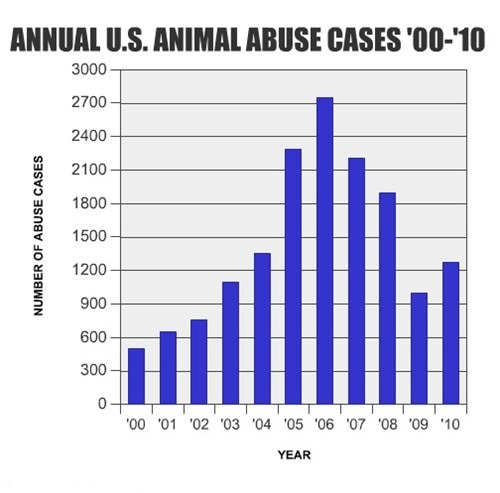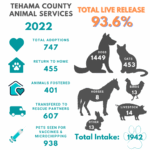The landscape of animal breeding is as diverse as the breeds themselves, a tapestry woven from both the noble intentions of guardians and the nefarious practices of exploiters. The reverberations of this dichotomy echo through the lives of countless animals, raising critical questions about the ethicality of breeding. How many breeders partook in animal cruelty? This question unravels a complex web of morality, responsibility, and the intrinsic value of life.
Breeders occupy a unique space in society; they are often perceived as custodians of specific breeds, dedicating their lives to preserving genetic diversity and congenial temperament. However, the reality of breeding practices is a spectrum—within that spectrum lies a significant number who perpetrate cruelty, blurring the lines between passion and exploitation.
The breeding industry can be analogized to a grand masquerade ball. Beneath the extravagant costumes and bold facades, hide the grim realities of some. While certain breeders don the masks of ethical practice, others reveal a sinister underbelly, often motivated by profit rather than the well-being of the animal. This masquerade is not just a metaphor; it represents the facade of legitimacy that some breeders operate under while engaging in ethically questionable practices.
Breeding, when approached with a respect for life and an understanding of animal welfare, can lead to the development of healthy, well-adjusted animals. Ethical breeders prioritize the physical and psychological well-being of their charges, ensuring that each animal is not just commodity but a cherished being. This commitment manifests in several critical areas:
- Health Screening: Ethical breeders understand the importance of genetic health. They screen breeding stock for hereditary conditions, ensuring that future generations arise free from avoidable diseases.
- Socialization: A hallmark of responsible breeding is the socialization of puppies and kittens. These animals are exposed to human interaction and diverse environments, fostering adaptability and stability in their future lives.
- Lifetime Commitment: The best breeders are committed not just to the sale of an animal but to its lifelong well-being. They offer support and guidance long after the transaction is complete, demonstrating a genuine investment in the animal’s future.
In stark contrast, many breeders engage in practices that prioritize profit over welfare. The term “puppy mill” arises in discussions of cruel breeding practices—a phrase that conjures images of overcrowded, unsanitary facilities where animals are treated as mere products. Puppymills exemplify the horrors that can emerge from breeding practices devoid of empathy. Animals raised in these conditions often suffer from a plethora of health problems, from physical ailments to severe behavioral issues. Each animal is a cog in this merciless machine, stripped of rights and subjected to exploitative conditions.
Additionally, the breeding of animals with extreme physical traits has emerged as a troubling trend. This pursuit of the ‘perfect’ specimen neglects the health ramifications associated with such features. Breeds that are manipulated to conform to specific aesthetic standards often experience debilitating health issues, including breathing difficulties, joint problems, and other life-altering conditions. In these instances, potential beauty becomes a guise that obscures suffering, revealing the darker side of breeding that prioritizes appearances over welfare.
The complexity of animal breeding requires a nuanced understanding of the regulatory landscape. Legislation aiming to curb animal cruelty in breeding often falls short. Laws exist in countless jurisdictions, but inconsistent enforcement can lead to continued suffering. Breeders can evade scrutiny, disguising their unethical practices behind technicalities and loopholes that perpetuate cycles of abuse. Advocacy groups rally tirelessly to amend laws and promote transparency, yet the insidious nature of cruel breeding practices often means that many remain hidden, languishing in obscurity.
Consumer awareness emerges as another pivotal aspect in the quest for ethical breeding. Those seeking to welcome a pet into their home must adopt a discerning eye, prioritizing breeders who adhere to compassionate methods. Researching a breeder’s reputation, visiting their facilities, and asking questions about their practices can illuminate their commitment to welfare. The choice made by consumers can either compensate for ethical practices or inadvertently support cruelty.
Moreover, adopting from shelters instead of buying from breeders represents a crucial avenue for promoting animal welfare. Every year, millions of animals are euthanized due to overcrowded shelters. By choosing adoption, individuals not only provide a home to a deserving animal but also help combat the tragic aftermath of unethical breeding practices. This decision can transform lives, allowing animals burdened with the weight of neglect and abuse to experience the warmth of a loving home.
In conclusion, the question of how many breeders partake in animal cruelty unveils a fragmented picture where the noble art of breeding is sometimes overshadowed by darker practices. Ethical care and genuine love for animals must be the cornerstone for those who choose to engage in breeding. The responsibility lies not only with breeders but also with consumers who must demand accountability and prioritize compassion in their choices. We are, each of us, a thread in this tapestry of existence—one that interlinks the fates of countless animals. Recognizing the responsibilities inherent in this tapestry is essential to ensuring a brighter, more humane future.







